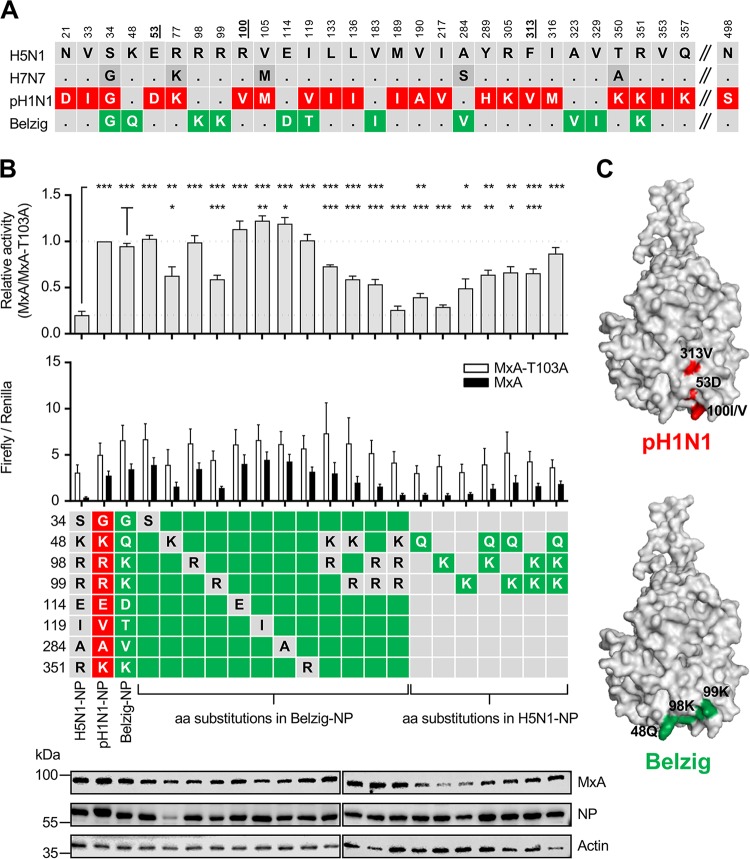FIG 1.
The nucleoprotein of Eurasian avian-like swine influenza viruses confers MxA resistance in polymerase reconstitution assays. (A) Amino acid differences between the NPs of H5N1, H7N7 (dark gray), pH1N1 (red), and Belzig (green) strains (for a complete alignment, see Fig. S1A in the supplemental material). Underlined positions have been shown previously to influence the MxA sensitivity phenotype. (B) (Top) The ratio of the activity of MxA to the activity of antivirally inactive MxA-T103A was normalized to that for pH1N1-NP (set at 1) and is shown as relative activity (shaded bars). (Center) Viral polymerase activity in the presence of MxA (filled bars) or MxA-T103A (open bars). HEK293T cells were transfected with expression plasmids encoding H5N1-PB2, -PB1, and -PA (10 ng), the indicated NP (100 ng), MxA (50 ng), and an artificial minigenome encoding firefly luciferase under the control of the polI promoter (100 ng). Additionally, a plasmid encoding Renilla luciferase (30 ng) was transfected as a control for transfection efficiency. Error bars indicate the standard errors of the means from at least four independent experiments. Student’s t test was performed to determine the P value for the difference from the respective wild-type NP. *, P < 0.05; **, P < 0.01; ***, P < 0.001. (Bottom) Expression levels of MxA and NP were detected via Western blotting. Actin was used as a loading control. (C) MxA escape mutations previously identified in pH1N1-NP and the newly identified mutations in Belzig-NP are shown in red and green, respectively, in the structural model of influenza virus A/HK/483/97 (H5N1) NP (PDB code 2Q06).

